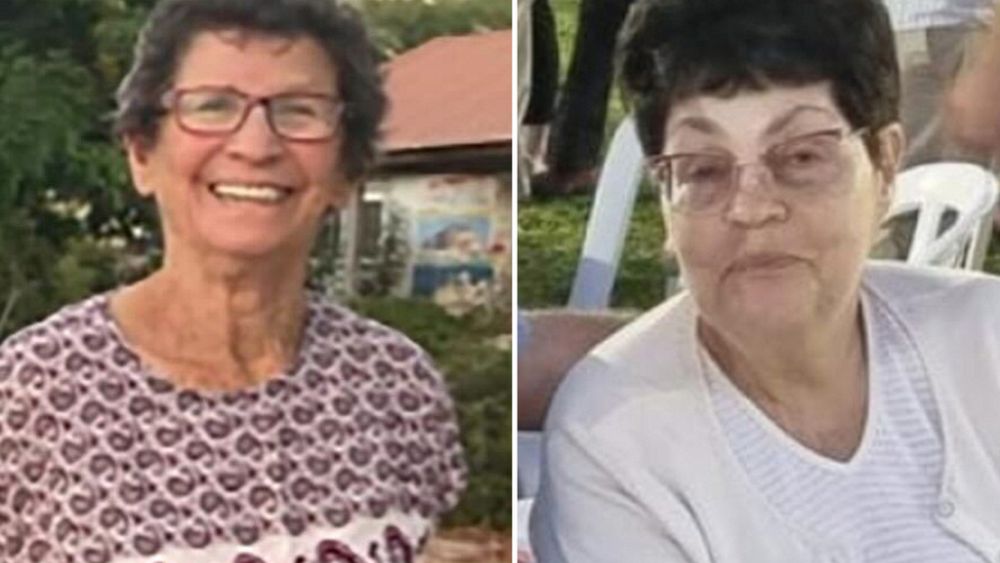Hamas claims to have freed two hostages. The conflict between Hamas and Israel is entering its third week. The number of people continues to increase. It is the deadliest conflict in recent years.
ADVERTISING
Two new hostages were released by Hamas on Monday evening. The US had ordered the release of all people kidnapped during its deadly attack on Israel on October 7, ahead of a ceasefire negotiation.
The two released hostages are of Israeli nationality and come from Kibbutz Nir Oz, according to the Israeli Prime Minister’s Office, which announced their identities: Yocheved Lifschitz, 85 years old, and Nourit Kuper, 79 years old. Their husbands are still imprisoned.
The International Committee of the Red Cross (ICRC) said it had facilitated their release on Monday evening.
This release comes three days after that of an American woman and her daughter.
More than 200 hostages
About 220 Israeli, foreign or binational hostages have been identified by Israel and detained by Hamas in the Gaza Strip after its deadly attack in the middle of Shabbat, the weekly Jewish rest period.
Hundreds of fighters from the Palestinian movement had crossed into Israel from Gaza, spreading terror with this unprecedented attack since the founding of the State of Israel in 1948.
Authorities said more than 1,400 people were killed in Israel, most of them civilians who were shot, burned or mutilated on the day of the attack.
On Monday, Hamas claimed that 5,087 Palestinians, mostly civilians, including 2,055 children, had been killed by Israeli retaliatory bombings since the conflict began.
“Complete dismantling”
Israel has vowed to “destroy” Hamas, which seized power in 2007 in the Gaza Strip, which has been under an Israeli blockade ever since.
“We want to completely dismantle Hamas – its leadership, its military wing and its operational mechanisms,” said Israeli Chief of Staff Herzi Halevi, surrounded by several armed men, in a video broadcast by the Israeli army on Monday night on X posted Tuesday.
Attacks have intensified in recent days on the 362-square-kilometer enclave where 2.4 million Palestinians are crowded and which Israel has been under siege since October 9, depriving them of food, water and electricity.
The Israeli army said it struck “more than 320 military targets” on Sunday night, including infrastructure belonging to Hamas and its ally Islamic Jihad. These two groups are classified as “terrorist” by the United States, the European Union and Israel.
Small quantities of international aid have been arriving via Egypt since Saturday. On Monday, a third convoy crossed the border at Rafah, the only border crossing into Gaza that is not under Israeli control.
A total of around fifty trucks were able to arrive in three days; according to the UN, at least 100 are needed per day.
35 humanitarian workers killed
The United States, which had received consent from Israel and Egypt for the flow of aid, announced on Sunday that “there will be a continuous flow from now on.” But for the European Union’s head of diplomacy, Josep Borrell, we need “more aid, faster” as well as a “humanitarian pause” to allow its distribution.
The United Nations High Commissioner for Human Rights, Volker Türk, also called on Monday for an “immediate humanitarian ceasefire” in Gaza, while 35 humanitarian workers have died there since the conflict began, including six in the last 24 hours, according to the UN.
The Chinese foreign minister, whose country has not explicitly condemned the Hamas attack, told his Israeli counterpart on Monday that “all countries have the right to defend themselves” in the first phone call between senior diplomats from both nations since the start of the year. The conflict.
“The most urgent task now is to prevent the situation from worsening and leading to a more serious humanitarian catastrophe,” Wang Yi also told Eli Cohen, according to a statement from his ministry.
ADVERTISING
The Israeli army continues to prepare for a ground offensive, massing soldiers on the edge of the Gaza Strip and carrying out limited attacks there to target Hamas infrastructure and locate missing or abducted people.
This prospect worries the international community, which fears an escalation of the conflict.
Iran, a Hamas ally, warned that the situation in the Middle East could spiral “out of control.”
The United States has increased its military presence in the region. An initiative that risks “escalating” the conflict, said the head of Russian diplomacy Sergei Lavrov on Monday in Tehran.
Strikes in the South
Since October 15, the Israeli army has been urging civilians in the north of the Gaza Strip, where the bombing is most intense, to flee to the south.
ADVERTISING
However, the strikes continue to impact the south, near the Egyptian border, where hundreds of thousands of displaced people are crowding.
The humanitarian situation is “catastrophic,” the United Nations warned. At least 1.4 million Palestinians have fled their homeland.
In Rafah, men filled plastic containers with water from cisterns while others searched the ruins of a building destroyed by a strike for survivors.
“They put my son’s torn body in a blue sack, Cham was charred,” chokes Ayman Abou Chamalah, a 34-year-old Palestinian who lost two children and his wife in a bomb attack.
In Khan Younès, still to the south, a family also prepared to bury children killed in a bombing, whose bodies, wrapped in white, were carried to the cemetery by relatives.
ADVERTISING
According to the International Organization for Migration (IOM), more than 19,000 people have been displaced in Lebanon after increasing clashes between the Israeli army and Lebanon’s Hezbollah, which is backed by Iran and Hamas allies, on the border between the two countries .
The border area on the Israeli side was also evacuated.

